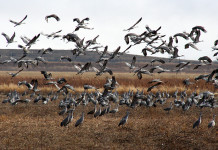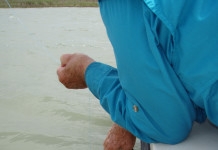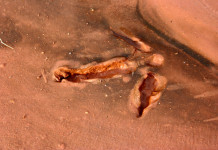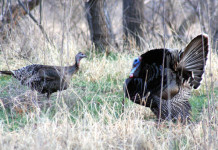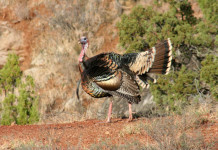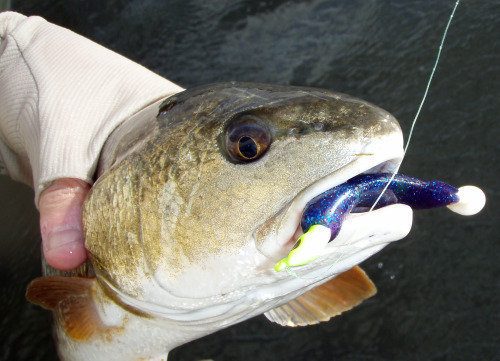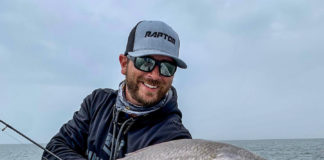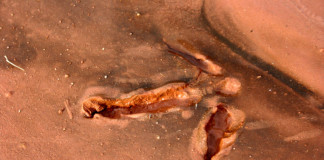The debate about the top Texas fishing holes could fill hours of discussion around the coffee shop, but there’s one thing everyone can agree on: It’s tough to go wrong with almost any of these fantastic bodies of water in prime months.
Our state waters harbor some of the best angling for more species than you can shake a stick at in both freshwater and saltwater, but there are some that stand out above the rest for quantity, quality or even both, and you should plan your year based on hitting these honey holes at peak times.
With that in mind, here’s a look at the next six months of Texas fishing that is sure to not disappoint even the most accomplished and seasoned anglers. Click here if you missed the article on the first part of the fishing calendar.
August Channel Catfish at Lake Tawakoni
When it’s hot, head to this 37,000-acre lake to take part in a catfish haul unlike anything you’ve ever seen. West Tawakoni was deemed the “Catfish Capital of Texas” by the state legislature in 2001 and for good reason. It sits on the banks of your best bet for catfish angling.
Tawakoni’s massive channel catfish population continues to thrive, and anglers can use stink bait and cut bait, including shrimp and livers, to haul in easy limits of the good-eating fish. The real secret is to bring along sour grain of some kind and bait up a few holes you intend to fish.
The easiest channel cat rig is a treble hook below an egg sinker on a swivel, which can be used to hold punch baits or any other kind of offering you have. The daily bag limit on channel cats is 25 fish at least 12 inches long, and if you have a couple of friends or family along with you, it can make for plenty of fillets destined for the peanut oil later.
September Hybrid Striped Bass at Cooper Lake
This sleeper lake remains a hotspot for hybrids, and they can be caught on a variety of lures this month, including topwaters, which can make for exciting action. You also can find hybrids by throwing slabs, crankbaits and other baitfish-type lures.
Many anglers will slow roll baits near the bottom including Sassy Shads and spoons and find success while vertically jigging bucktail offerings and trolling or throwing crankbaits also are excellent ways to find lots of fish.
The lake record is more than 11 pounds and when you consider the hybrid, a cross between a striped bass and a white bass, fights harder than either, a fish of that size could be the catch of the year for any angler.
October Redfish at Sabine Pass
The natural outlet from Sabine Lake into the Gulf of Mexico south of Port Arthur is one of the truly amazing ecosystems in our state. If you’re looking to find bull reds, the beaches along the pass are at the top of the list of prime fishing grounds. Look for schools of baitfish and you’ll find feeding reds not far behind. That holds true whether you’re on the beachfront or working from a pier.
Live bait is a winner in most scenarios, including for the wading angler, but don’t overlook the venerable gold spoon or soft plastics. And always be sure to use stout tackle and keep the drag looser than you would for other fish; these battlers can make a mockery of some of the best fishing tackle on the market.
If you’re using live bait, circle and wide-gap hooks work best for increasing the chances of a solid hookup with a big fish and they don’t require a big hookset to connect.
November Smallmouth Bass at Lake Whitney
Eight of the Top 10 Smallmouths in Texas came from Whitney. When you consider they fight harder pound-for-pound than largemouths, it makes this month a great time to head to Central Texas. Look for rocky structure and you’ll find fish not far from it, including along shorelines where creeks flow into this Brazos River impoundment.
Deep-diving crankbaits and Sassy Shads work as good as anything for finding smallmouths at that time of year, especially in patterns that imitate crawfish, one of the smallmouth’s favorite meals. The fish also could be ganged up around main-lake points in pursuit of moving schools of baitfish. One hotspot to consider fishing is the rocky shoreline that’s part of the lake’s state park.
Other areas of the lake to look for smallies include the middle and lower portions where the water is clearer and there is a variety of rocky habitat that will hold fish almost all year.
December Largemouth Bass at Falcon International Reservoir
This long has been one of Texas’ top bass fisheries, but after the lake filled in due to heavy rains in the past few years it really has turned on even more. Falcon features great bass habitat that includes rockpiles, standing timber and inundated vegetation. It’s a prime lake for flipping and pitching to vegetation, but fish also can be caught on crankbaits and spinnerbaits along dropoffs and underwater channels.
Another strategy is to fish a variety of soft plastics on a drop-shot rig in and around aforementioned rockpiles and ledges where fish may be lethargic and you’ve got to really hit them on the head to induce a strike.
One tactic veteran anglers employ during the winter is to target fish in pre-spawn mode that are holding between the shallows and dropoffs. And don’t be afraid to use bigger lures such as large swimbaits near brushlines around the backs of creeks. Fish will be looking to maximize their eating efforts ahead of the early spring spawn.
January Largemouth Bass at Amistad International Reservoir
This 65,000-acre monster reservoir fed by the Rio Grande north of Del Rio is a big bass factory, and this month is prime time to find lunkers deep. You’ll have to work for them with a variety of offerings including deep-diving crankbaits and maybe even work your drop-shot rig, but the rewards could be the fish of a lifetime. Amistad’s heaviest largemouth, a 15.68-pound bruiser, was caught at the end of December in 2005 by Tom Sutherland on a DD22 crankbait, illustrating that lethargic fish still will take a lure this time of year – and big ones, too – but you may just have to hit them on the head with it.
The lake is filled with rocky points, dropoffs and ledges that hold fish not just in the winter but also through the spring and summer, and angling along edges with a variety of Texas-rigged soft plastics also is a surefire way to find fish. The lake sports hydrilla mats which are extremely thick but that also hold a lot of fish, and many seasoned bass anglers will use heavier baits and plow through the vegetation in hopes of finding fish. Expect a lot of hang-ups if you go that route and use braided line for extra sensitivity if fish are striking light and also to avoid abrasion that could cost you a big fish.
* * *
It’s tough to beat Texas angling no matter where you are, and while these bodies of water are surefire locales to find the fish of the year or fish of a lifetime, there are plenty of other places not far away that likely are just as good.
It’s tough to go wrong in the Lone Star State in that regard!




